Graham Reid | | 10 min read
Keith Jarrett: Shenandoah
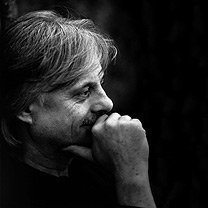
As much as a disembodied voice down a
phone line can, Manfred Eicher confirms the impression he made on
English journalist Richard Cook when he visited London in late ’89:
“He is a slim, rather careworn-looking man, whose great energy and
dedication don’t always break through a cautious temperament,”
wrote Cook, describing this founder of the German record label ECM (Editions of Contemporary Music).
“His small, shapeless face is
surmounted by a careless thatch of greying hair, his eyes have the
pale glitter of graphite; he’s not much given to laughing. But he
warms to anything he senses is kindred to his own beliefs.”
As befits the head of a company which
once carried the tag line “the most beautiful sound next to
silence,” Eicher seldom gives interviews . . . and on the rare
occasions he does, they are peppered with references to Kafka and
Beckett, the zeitgeist of recordings, and he draw analogies between
the music of saxophonist Charles Lloyd and a painting by Giacometti.
He counts among his friends film-makers
Jean-Luc Godard and Ingmar Bergman, is a businessman who can say
without being disingenuous, “I never thought about markets, I
thought only about tones and whether they moved me”.
He brings to the production of his
recordings the northern European aesthetic of the painter Edvard
Munch, whom he admires.
Guitarist Pat Metheny, now no longer
with ECM, says the only criticism Eicher ever made was “too
commercial." Has any other record company head honcho ever said
that to an artist?
All of that makes Manfred Eicher –
whom Billboard called “a visionary” – a very interesting man
indeed. And very successful, too.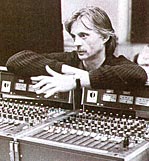
His ECM label has been, for 25 years,
synonymous with some of the finest jazz around. The label could
boast – not that Eicher would – that it launched the careers of
guitarists Metheny and Bill Frisell, pianist Keith Jarrett,
saxophonist Jan Garbarek and dozens of others.
Under Eicher – who considers the
music industry as “a kind of environmental pollution” – ECM
gave the breath of life in the late Seventies to American free jazz
outfits such as the Art Ensemble of Chicago long after their
home-base labels had abandoned them.
Today ECM’s back-catalogue contains
over 400 albums, and - since it launched its New Series imprint in
1983 - has commanded an audience in the contemporary classical world.
Many of the ECM albums are “landmarks in jazz and new music,”
Billboard observed last year.
In much the same way as Eicher gave
Jarrett (formerly a sideman with Miles Davis and Charles Lloyd) and
Garbarek (part of Karin Krog's band but a virtual unknown outside
Norway) the opportunities to extend themselves into spectacularly
successful solo careers, he started the New Series with Estonian
mystic composer Arvo Part.
So when, in '94 on ECM’s 25th
anniversary, the New Series sprang the enormously successful Officium
album by saxophonist Garbarek and the Hilliard Ensemble (over 250,000
copies sold - not bad for an album of airy, austere saxophone and
medieval chants) there was the feeling it couldn’t have happened to
a nicer bloke.
Happy anniversary, Manfred . . . and
congratulations on the success of Officium.
“Yes, I am always surprised when
people appreciate what we are doing,” he says in a voice as
measured and rapid as the notes of Officium are leisurely. “I never
think about market criteria, so could never foresee a success like
that. In the past we were often successful . . . but with Officium we
have something that is dark and light in the Beckett sense where we
have the juxtaposition of the two.
“You can feel the integrity of a
project and think it may touch people, but you never know these days,
there are so many layers, so many books and recordings coming out and
there's too much of everything.”
Eicher's point about the sheer volume
of artistic output today is one he articulates often; audiences see
too much and are too uncritical, reviewers (even those who acclaim
ECM releases) write less and less substantial and critical reviews,
with CDs reviewers jump from track to track and responses are
superficial . . .
In this regard the ascetic Eicher is
less like a businessman than a philosopher-musician . . . and his
background is illustrative.
Classically trained, the first record
he bought was “at the end of the Fifties, Klemperer recordings of
Mahler.” Pop music of the Beatles kind went right past him. (“I
noticed it but it never had an impact like chamber music and Miles
Davis.”)
He lived on yoghurt and coffee so he
could buy records, won a scholarship to the prestigious Berlin
Academy of Music, was a production assistant on recordings by Herbert
von Karajan, and indulged his abiding passion for jazz by attending
concerts and clubs.
In the late Sixties -- when rock
culture dominated the American music industry and jazz artists were
relocating to Europe -- he started ECM in Munich with money borrowed
from the owner of a local discount records shop.
“I was listening to people like
Omette Coleman, Paul Bley, Cecil Taylor and Bill Evans, but as far as
recording was concerned, nothing interested me. ESP Disk was
interesting,” he says, noting an avant-garde New York label. “But
they had a strange production quality because they were mostly
recorded in living rooms and didn't have the precise shape and sound
this music deserved.
“I wanted to do something from my
cultural background as a European with my awareness of what classical
engineers would do. I wanted to explore a different sound picture
than we had at the time."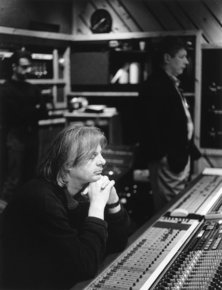
The first album on ECM -- prophetically
titled Free at Last and by expatriate American pianist Mal Waldron -
appeared in 1970. The company pressed 500 copies and eventually sold
more than 14,000.
What impressed listeners then, as it
does today, was the clarity of Eicher’s production, one of the
label’s hallmarks. And as much as the “ECM sound” - pristine
clarity, a sense of space and feel for silence - garnered an
audience, so, too, did Eicher’s eye for packaging. ECM albums came
in austere covers often with chilly, atmospheric photographs of
barren landscapes that were stark and introspective parallels of the
music within. Very crisp, very European.
As Time magazine quipped about the
recordings in studios in Oslo: “for fun the musicians trundle off
to the Edvard Munch Museum.”
Eicher says the recording sessions
aren’t businesslike (“they are efficient,” he says efficiently)
but the musicians - many of them Americans, some such as guitarist
Egberto Gismonti from South America - are affected by the light and
atmosphere of Norway.
Eicher also exhibits an astute hands-on
tendency with his artists and over the years has built a reputation
for putting various players together in unexpected collaboration. The
Officium album which brought saxophonist Garbarek together with a
classical vocal quartet was typical.
He has put Brazilian Gismonti alongside
American Charlie Haden and Norwegian Garbarek with remarkable
results. He recorded jazz rebel Lester Bowie, exiled South African
pianist Dollar Brand, Indian violinist Shankar, bandoneon player Dino
Saluzzi ....
And developing careers rather than
picking up name players has always been the Eicher ethic: “So many
on ECM were not known or maybe just as sidemen. Jan Garbarek and
Keith Jarrett were not known in any kind of solo career, and putting
[vibraphone player] Gary Burton with [pianist] Chick Corea became a
new idea of pairing.
“Pat Metheny was a discovery for us,
Bill Frisell too. And I found Arvo Part in the middle of a creative
process. He was still living in Estonia when I heard him.”
But Eicher has also lost some off his
roster, notably guitarist Metheny, whose post-ECM career, it must be
said, has seen him become enormously popular but producing material
that barely hints at the depth of expression he achieved when he was
working with Eicher.
There are no long-term contracts
(expatriate New Zealand pianist Mike Nock recorded one album for the
label) and each relationship with a musician is based on “trust and
genuine respect for each other.”
And ECM’s list of superb jazz albums
is lengthy: Garbarek‘s minimal Places and Dis, the vigorous free
jazz on albums by the Art Ensemble of Chicago, Jarrett's numerous
live recordings including the weighty Sun Bear six-disc box set,
beguiling releases by cellist David Darling and vocalist Meredith
Monk, the late-career resurrection the label gave saxophonist Charles
Lloyd ....
It would be wrong, however, to say the label has been unimpeachable in its track record. While many releases are not commercially successful - a matter that Eicher treats as a minor consideration after artistic merit - the label seemed to come unhinged in the early 80s with releases by brain-numbing avant-rock outfit Lask and the exciting (but hardly ECMish) kiss-the-sky guitar jazz of the Everyman Band. Perhaps coincidentally, it was around the time Eicher was creating his New Series imprint to accommodate the likes of Part, the Hilliard Ensemble and others.
“Our music was very open from the
start. There was no dogmatic idea of what jazz should be. It was a
label for improvisers, and improvisation started in the 16th century.
So jazz was always only one part of it.
“But improvising to me means any kind
of musical idea that comes to my ear. The New Series started with
Arvo when we realised we needed a new label for that kind of music.
We’d already had Steve Reich’s Music for 18 Musicians and
Meredith Monk’s [vocal] music developed from music that had come
from fragments of improvisation."
ECM's jazz imprint is not without its
critics, either: some have quipped that the label’s acronym stands
for Excessively Cerebral Musings, and the Eurocentricism it displays
has shifted the jazz co-ordinates for its predominantly white
audience away from the origins of this black music. Long on
cerebration, short on funk, said Time.
That view is simplistic, however, and
Eicher is unashamedly a product of the Continent. It also hasn’t
stopped him building a label that has numerous black American artists
(Sam Rivers, Old and New Dreams among many others) on its books.
“Music is such a universal thing and
I don’t like this term ‘world music’ where some pop producer
picks up African musicians and takes them to a studio in London and
makes some gesture to a tribal source. It's artificial. If you are
going to be true, you have to capture people in their own place.”
ECM has anticipated many movements in
contemporary music: the solo piano musings of Jarrett have spawned
innumerable inferior New Age pianists, configurations of artists from
various parts of the globe have found their parallel in present world
music trends of the kind Bill Laswell attempts, and the holy ambience
of Arvo Part has reached a popular audience through Henryk Gorecki
and John Tavener.
Even the ethereal melodic sound of
Garbarek’s saxophone has its diminishing return in Kenny G . . .
and some have noted that Officium was not an unexpected development.
It has been read as “Kenny G-meets the-Benedictine Monks of San
Domingo de Silos”, both of whom sold albums by the truckload. That
latter comment is spurious, however, and diminishes the vision that
Garbarek had when he brought the two sounds together.
And the consistency of Eicher’s
vision has been extraordinary - 25 years of quiet, uncompromising
independence and integrity almost unknown in the world of com-
merce and hard currency.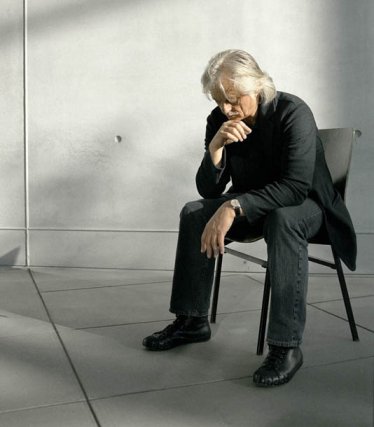
“ECM isn’t GRP and it’s not
Verve,” says Steve Vining, vice-president of sales and marketing
for RCA Victor/BMG Classics, which handles the label in the United
States. “But you can be very successful with this music as long as
you don’t try to market it as something it’s not. The tone of the
advertising is important. The key is to be innovative while keeping
consistent with the label’s special voice.”
Eicher is aware of what that voice is –
and money doesn’t buy or sell it.
“Major companies are always far
behind what the visionary small producers are doing. They can only
jump on a trend but very seldom do they create something. What makes
me feel good is that we could stay independent for 25 years in our
thinking. lt allows us to articulate a certain kind of musical
language that seems to have influenced many musicians and people.
“This is something special in the
world because it is based on the idea of artistic integrity and
artistic morality.”


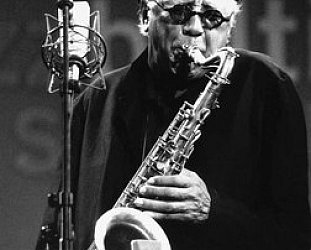
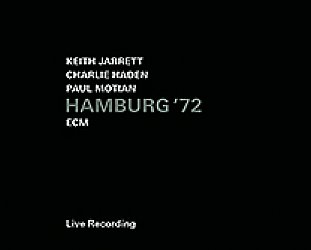

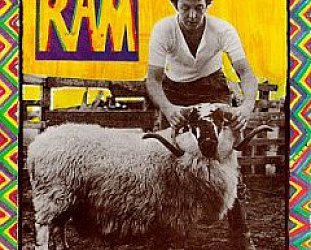
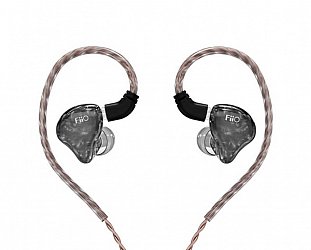
post a comment